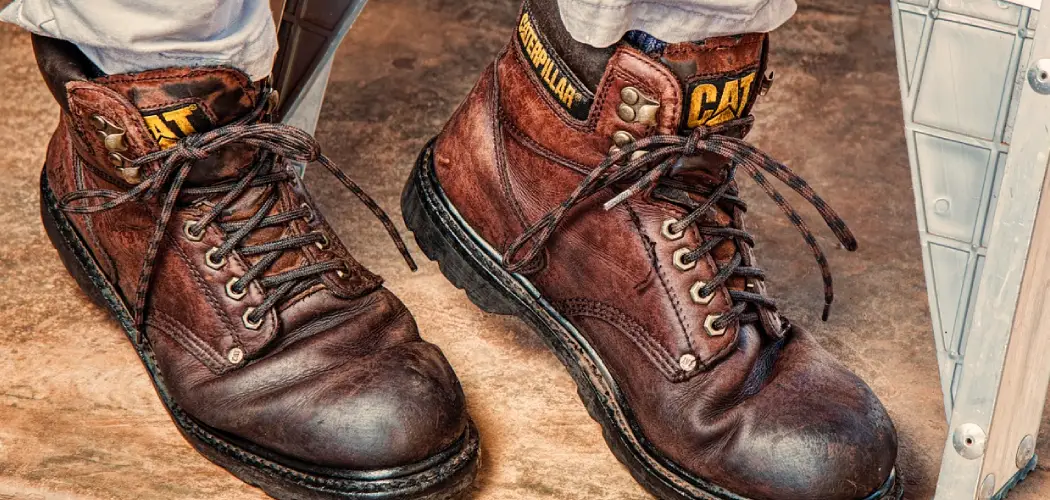Steel-toe boots are an important piece of safety equipment for many professionals. They provide protection from sharp objects, extreme temperatures, and heavy impacts that can cause injury or worse. However, steel-toe boots can be uncomfortable due to their rigid design and hard soles.
With proper care and attention, it is possible to make steel-toe boots comfortable enough to wear for extended periods of time.
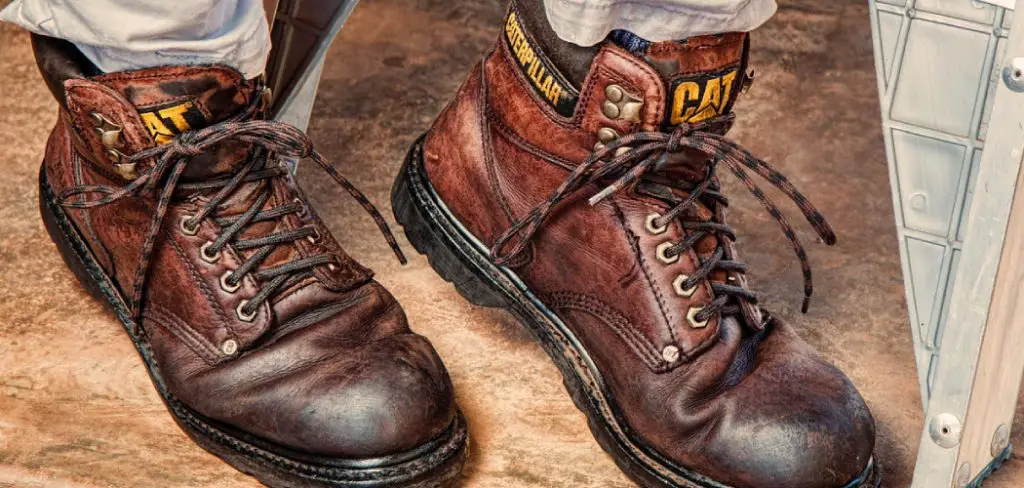
The main advantage of making steel-toe boots comfortable is keeping your feet protected while also providing comfort. Steel toe boots are designed to protect your feet from harsh impacts, extreme temperatures, punctures, and other workplace hazards.
Steel toe boots are typically heavier and bulkier than ordinary work shoes, so they can be uncomfortable to wear for long periods of time. In this blog post, You will learn in detail how to make steel toe boots comfortable.
Step-by-Step Processes for How to Make Steel Toe Boots Comfortable
Step 1: Inspect the Toe
Inspect the inside of the steel toe for any potential sources of discomfort. Look for a raised edge or seam that might be rubbing against your foot, and make sure the steel toe itself is not too large or bulky. If necessary, use sandpaper to smooth down any sharp edges.
Step 2: Wear Thin Socks
Wearing thick socks or multiple pairs of socks can actually add to the discomfort as it tightens up the inner space of the boot. Thin, breathable socks will help to reduce friction and keep your feet from getting too hot while wearing steel-toe boots.
Adding insoles to your steel-toe boots can provide additional cushioning and support, helping to reduce the overall discomfort. A variety of insoles are available on the market that can be tailored to your specific needs and preferences.
Step 3: Take Time to Break Them In
Like any new shoes, steel-toe boots take some time to break in. If you’re wearing them for long periods of time, take frequent breaks so your feet can rest, and avoid developing blisters or other foot issues. If possible, wear steel-toe boots only when absolutely necessary. If you don’t need to wear them for long periods of time, opt for regular shoes instead.
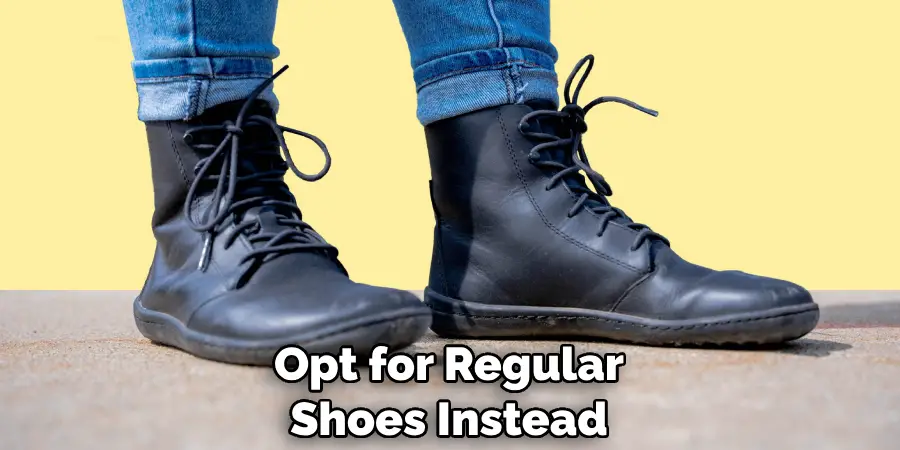
Step 4: Check for Proper Fit
Make sure your steel-toe boots fit properly. You shouldn’t feel any rubbing or pinching from the boot and should be able to move freely without feeling restricted. If possible, use a shoe horn to get into your steel-toe boots. This will help prevent any rubbing or pinching, as you won’t be pulling on the boot’s material.
Step 5: Use a Boot Stretcher
If your steel-toe boots are still too tight after breaking them in, consider using a boot stretcher to provide additional space in key foot areas. This will help to reduce any potential pain and discomfort. Make sure you’re wearing the right socks for the weather conditions. If it’s cold outside, opt for thicker woolen socks to keep your feet warm; if it’s hot, look for lightweight, breathable socks to keep your feet cool.
Step 6: Choose the Right Boots for Your Needs
When purchasing steel-toe boots, make sure you’re selecting a model that meets your specific needs. If you spend long hours on your feet, choose a model with extra cushioning and support; if you work in wet conditions, opt for a waterproof or water-resistant model.
Choosing the right boots for your needs ensures maximum comfort while wearing steel-toe boots.
Tips for How to Make Steel Toe Boots Comfortable
- Wear thick, moisture-wicking socks to help absorb sweat and keep your feet dry. Also, consider wearing two pairs of socks for additional cushioning and protection.
- Buy steel-toe boots with extra padding in the toes and soles to provide more cushioning and reduce discomfort. Ensure the boot fits properly so it doesn’t rub or pinch your feet.
- Break in your boots gradually by wearing them around the house for a few hours at a time before taking them out on long walks or hikes.
- Use insoles to add extra cushioning and improve arch support. Look for insoles that are specifically designed for steel-toe boots, as they provide the best fit and support.
- Apply oil to your boots regularly to keep them soft and supple, reducing discomfort when wearing them.
- Keep your feet comfortable by taking breaks and stretching whenever possible. Stand up, walk around, or take a few steps to help circulation in your feet and reduce discomfort from standing too long.
- If you have any foot problems that may be aggravated by wearing steel-toe boots, talk to your doctor about ways to reduce the risk of injury or discomfort. Consult with a podiatrist if you need additional relief.

Following these tips can help make steel-toe boots more comfortable and safer to wear while working or participating in outdoor activities such as hiking or hunting.
How Long Does It Take for the Boot’s Material to Break in and Become Comfortable?
The answer to this question will depend on the material and construction of your steel-toe boots. Generally, leather boots take several days to a few weeks to break in and become more comfortable. If you have suede or synthetic materials, they may take less time to soften up and become manageable.
Additionally, the type of lacing system (lace-up vs. zip closure) and the overall structure of the boot may have an effect on how quickly the material will break in.
To ensure that your steel-toe boots are comfortable, it’s important to know the materials used in making your specific pair of boots before breaking them in.
Your local shoe store or manufacturer should be able to tell you what material your boots are constructed of and any other information about the product that may help break them in. Depending on the materials, there are a few different methods for breaking in steel-toe boots.
Are There Any Special Techniques for Breaking in a Pair of Steel Toe Boots?
The best way to break in a pair of steel-toe boots is to wear them around carefully and slowly. Since they are made with heavier material, you don’t want to overdo it immediately. Wear them for 15-30 minutes at a time, gradually increasing the length of your wearing times until you are comfortable wearing them for a full workday.
You can also try stretching the boots to make them more comfortable. You can do this in two ways: by applying heat and moisture or by using a specialized boot stretcher.
Applying heat and moisture involves wearing thick socks, filling a pair of plastic bags with water, placing them inside the steel-toe boots, and wearing the wet boots while doing light activities. The heat from your feet will help steam the leather over time, making it pliable enough to stretch naturally.
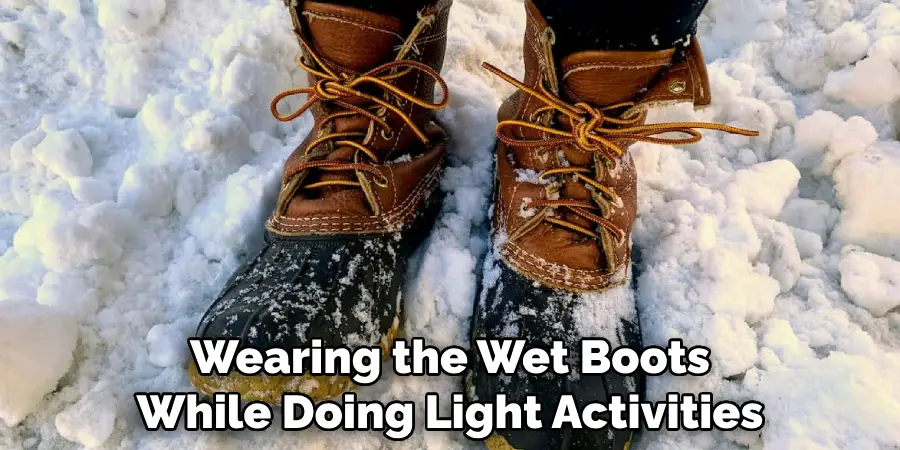
Alternatively, you can purchase a boot stretcher for a more targeted approach. A boot stretcher is essentially an insert that helps loosen tight areas of the boot by stretching them out. It can also help with tricky areas, like the heel or toe box, that are harder to stretch manually.
Are There Any Special Care Instructions for Steel Toe Boots?
Special care instructions should be followed when wearing steel-toe boots. To ensure their comfort and durability, cleaning the boots regularly with warm water and a bar of mild soap is important. After cleaning, allow them to dry completely before wearing them again. It is also important to lubricate the leather parts of the boot with a carpet-safe product such as mink oil.
This will keep the leather parts soft and flexible, making them more comfortable to wear. Steel toe boots should also be checked regularly for any signs of wear and tear or damage and repaired as needed.
Finally, when not worn, steel-toe boots should be stored in a cool, dry area away from direct sunlight. Following these simple care instructions will help keep your steel-toe boots comfortable and lasting longer. It is important to remember that steel-toe boots are not designed for all-day wear and should be taken off when possible.
Are There Any Health Benefits to Wearing Steel Toe Boots?
Safety is the top priority when wearing steel-toe boots and should always be considered. However, many people don’t know about the health benefits of wearing steel-toe boots. Steel toe boots are designed to protect your feet from heavy objects falling or rolling onto them and give you extra protection against sharp objects, such as nails and screws.
The steel toe also adds cushioning to your feet, providing the same level of support that you would get from running or walking shoes. Steel toe boots also provide additional arch support that helps reduce foot fatigue, making them comfortable for long periods of time.
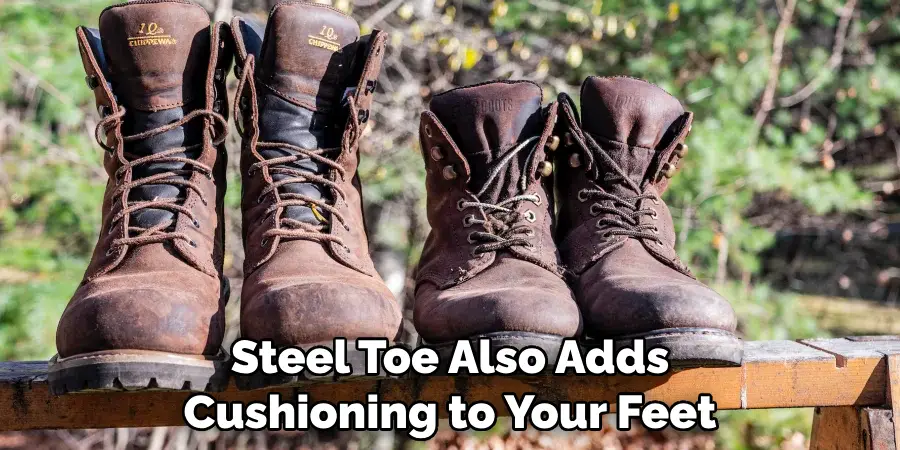
Overall, steel-toe boots are a safe and secure choice for those who need to work in an environment where they may be exposed to hazards. With the extra arch support, cushioning, and protection from falling and rolling objects, steel-toe boots can help you maintain your health and keep your feet safe.
Conclusion
In conclusion, making steel-toe boots comfortable is all about finding the right balance of cushioning and support. This can be achieved with the help of insoles, tongue pads, and other aftermarket parts to improve fit and comfort. Additionally, taking care of your feet before and after wearing your steel-toe boots is key to maintaining their long-term comfort.
By following the simple tips highlighted in this article, you’ll be able to find the right pair of steel-toe boots for your feet and stay comfortable throughout the workday. I hope this article has been beneficial in learning how to make steel toe boots comfortable. Make Sure the precautionary measures are followed chronologically.

